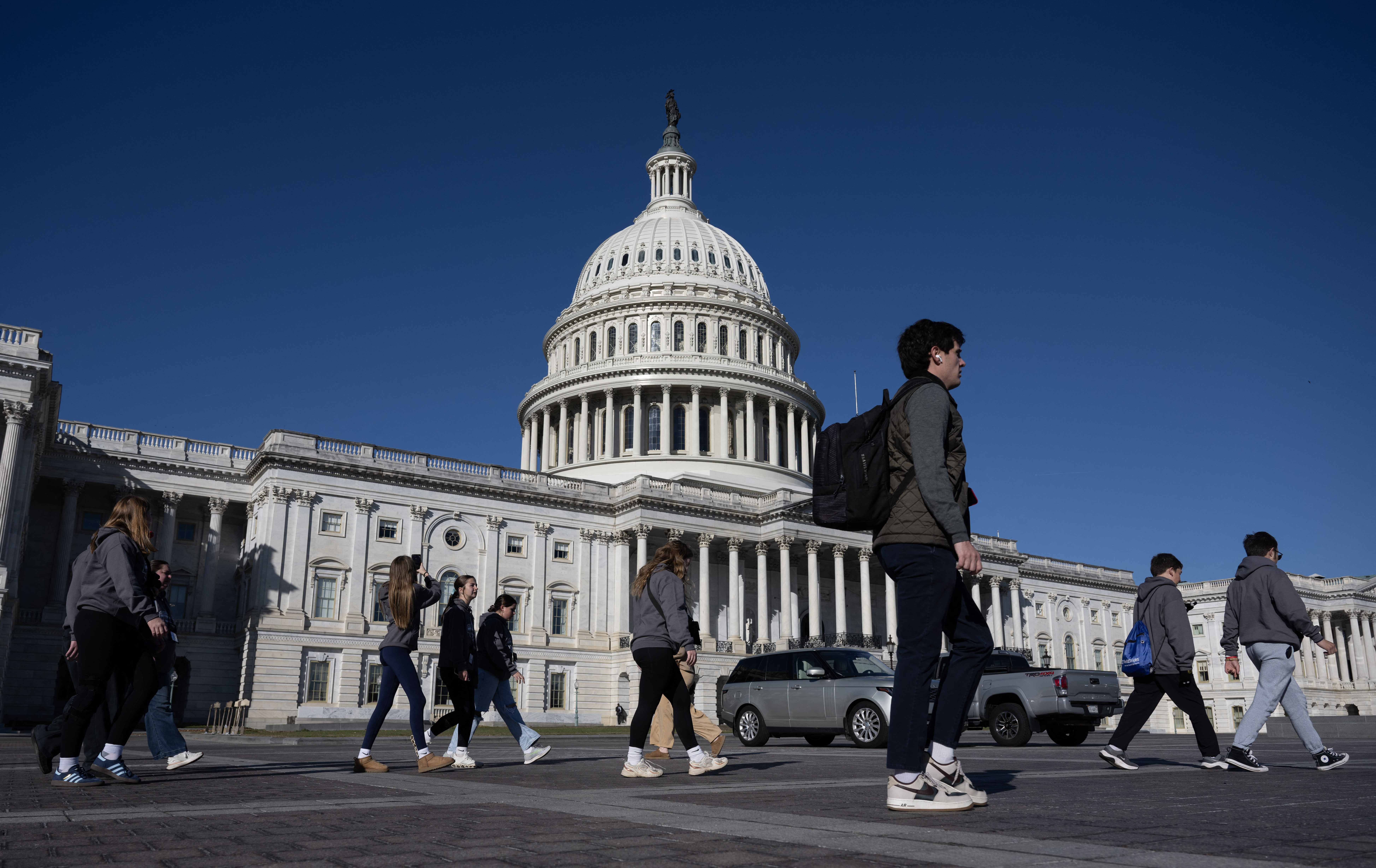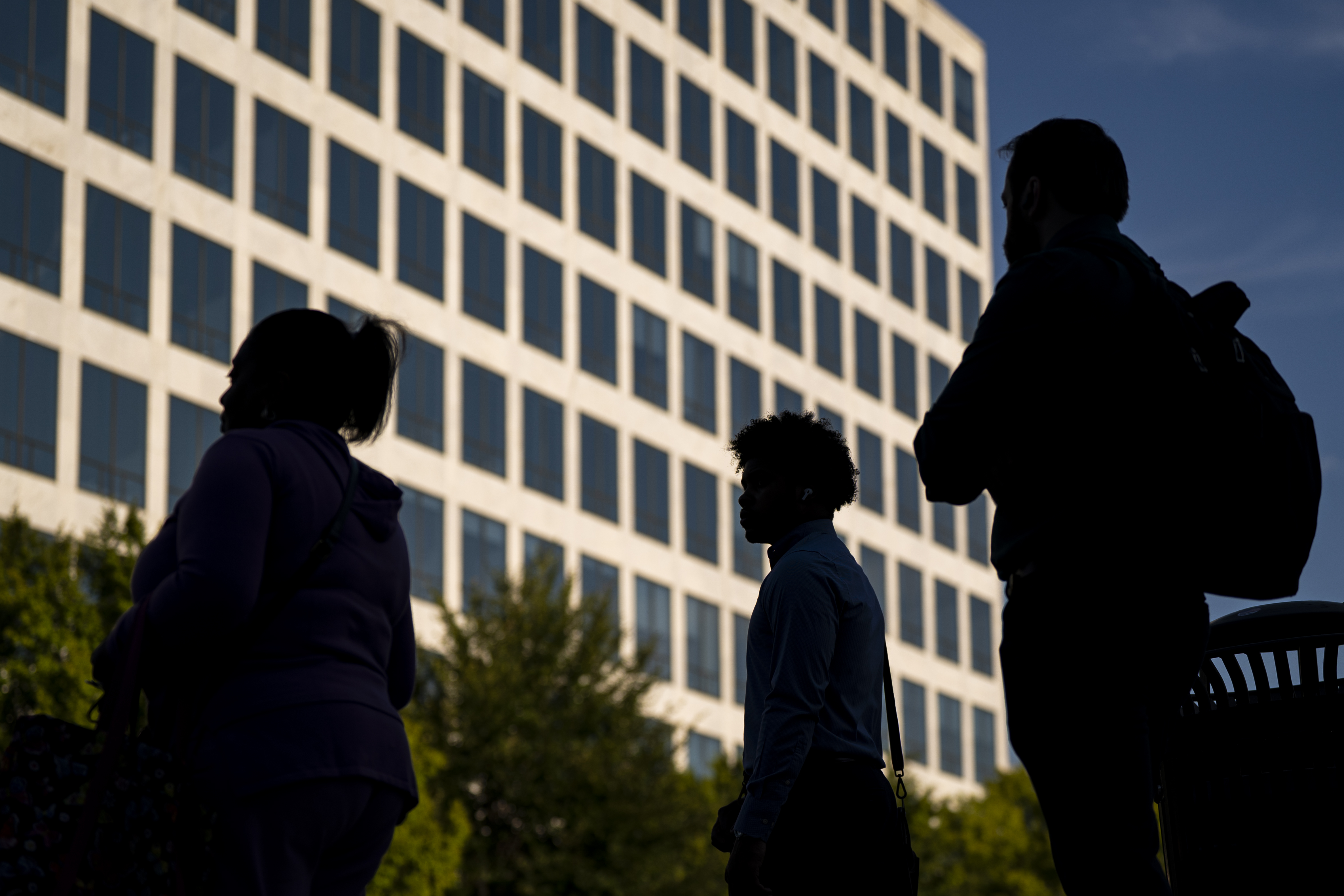Now that the country’s longest government shutdown has ended, when can we expect many aspects of our lives to return to normal?
Here’s what we learned about when federal workers can expect back pay, when more flights will resume, when Americans in need can expect full SNAP benefits and more.
Federal jobs, RIFs and back pay
The bill that ended the shutdown reinstated thousands of government employees who were laid off during the shutdown, secured back pay and protected against additional reductions-in-force (RIFs) through the end of January.
It’s unclear when exactly furloughed workers will get their back pay or how fast paychecks might resume, but the White House has urged federal agencies to send paychecks out “expeditiously and accurately,” a senior administration official said.
NBC News has reached out to the Office of Management and Budget for details.
Health and Human Services employees were told the agency would try to get furloughed employees paychecks with back pay on or before Nov. 21, according to an email obtained by NBC News.
An email to State Department employees included a link to frequently asked questions on returning to work and an update on issues related to backpay and bidding for their next positions and overseas posts.
The senior administration official said the White House was projecting that employees at some agencies, including the General Services Administration, Office of Personnel Management and the departments of Energy, Health and Human Services and Veterans Affairs, would get their checks as soon as this weekend.
Other departments, including Education, State, Interior, Transportation and some agencies, such as the Environmental Protection Agency, NASA and the Social Security Administration, could get their backpay by Monday, the official said. Still others, including Agriculture, Commerce, Homeland Security, Housing and Urban Development, Labor, Treasury and DOJ, could receive their checks by the middle of next week, the official said.
Furloughed federal workers’ return
The U.S. Office of Personnel Management (OPM) told federal employees in the Washington, D.C., area to show up on time Thursday, hours after Trump signed the funding bill into law.
“Employees are expected to begin the workday on time. Normal operating procedures are in effect,” OPM said in a status update dated Thursday, Nov. 13. Federal workers can check with their agency or office for other updates.
News4 saw quite a few federal workers exiting the L’Enfant Plaza Metro station on Thursday morning.
“You just find out how valuable everyone else is,” one commuter said. “I’ve been here. It’ll be nice to have everybody else back.”
“I’m glad to see people getting back to work and getting paid again,” another commuter said.
Business owners that count many federal workers as customers were glad to see them again. For weeks, the owner of a truck that sells coffee near L’Enfant Plaza, which is surrounded by federal buildings, told News4 that his government worker customers were just not there. For him, the shutdown was a major financial hit for which there would be no back pay.
SNAP
With the shutdown over, state officials said Thursday that they are working to get full SNAP food benefits to millions of people, though it still could take up to a week for some to receive their delayed aid.
A back-and-forth series of court rulings and shifting policies from Trump’s administration has led to a patchwork distribution of November benefits under the Supplemental Nutrition Assistance Program. While some states already had issued full SNAP benefits, about two-thirds of states had issued only partial benefits or none at all before the government shutdown ended late Wednesday, according to an Associated Press tally.
The federal food program serves about 42 million people, about 1 in 8 Americans, in lower-income households. They receive an average of around $190 monthly per person, though that doesn’t necessarily cover the full cost of groceries for a regular month.
A spokesperson for the U.S. Department of Agriculture, which runs the program, said in an email Wednesday that funds could be available “upon the government reopening, within 24 hours for most states.” But the agency didn’t say whether that timeline applies to when the money is available to states or when it could be loaded onto electronic cards used by beneficiaries.
Seesawing court rulings and messages from the USDA have meant that beneficiaries in some states already have received their full monthly allocations while in others they have received nothing. Some states have issued partial payments.
States say it’s faster to provide full benefits than it is to do the calculations and computer programming required for partial amounts. Go here for more info.
Flights
Airlines are optimistic they can resume normal operations just a few days after the government lifts its order to cut some flights at 40 busy airports, but it’s not clear how soon that will happen even though the federal shutdown is over.
The Federal Aviation Administration did announce Wednesday night that airlines won’t have to cut more than 6% of flights at those airports because air traffic controller staffing has improved significantly in the last few days. Originally the order that took effect last Friday called for those flight cuts to increase to 8% Thursday and top out at 10% on Friday.
A number of air traffic controllers missed work while they were going without pay during the shutdown, and the spike in understaffing at airport towers and regional control centers prompted the flight cut order due to concerns about safety. The existing shortage of several thousand controllers is so bad that even a small number of absences in some locations caused problems.
Officials at FAA and the Transportation Department didn’t offer any updates Thursday morning about when they will decide to lift the order. Transportation Secretary Sean Duffy has said the decision will be based on the safety data that experts at the FAA are watching closely.
The airlines say they will be ready and expect that normal operations will resume within three or four days after the order is lifted. Some experts have suggested that problems might linger longer than that and could affect Thanksgiving travel, so it is difficult to predict whether the airlines will be able to recover from this as quickly as they do after a major snowstorm disrupts their operations and leaves planes and crews out of position.
Smithsonian museums and the National Zoo
The Smithsonian museums and National Zoo are set to reopen within days. The National Museum of American History, the National Air and Space Museum, and the Steven F. Udvar-Hazy Center will welcome back visitors on Friday, Nov. 14.
The National Zoo is set to reopen on Saturday, Nov. 15.
All other museums and research centers will reopen by Monday, Nov. 17. They will reopen on a rolling basis. Information is expected to be posted on the Smithsonian’s website.
All the Smithsonian properties are closed Thursday, Nov. 13.
Other museums affected by the shutdown are also scheduled to reopen.
The National Archives said it’s working to restore full operations as quickly as possible. Go here for full info.
What about health care?
In a major concession by Democrats, the bill that ended the shutdown does not include an extension of enhanced health care subsidies under the Affordable Care Act, or Obamacare, after Republicans held firm against extending those funds beyond 2025. That means more than 20 million Americans could see their premiums spike next year.
Many House and Senate Democrats are fuming over the failure to secure health care funding as part of the bill. Senate Majority Leader John Thune, R-S.D., has promised a Senate vote on a to-be-determined ACA funding bill, with no guarantees that it will pass. Johnson has not promised a similar vote in the House.
“We cannot enable this kind of cruelty with our cowardice,” said progressive Rep. Alexandria Ocasio-Cortez, D-N.Y.
In the House Rules Committee on Tuesday, Republicans rejected Democratic motions to guarantee a floor vote on an ACA funding extension, and turned away an amendment by Rep. Steven Horsford, D-Nev., to redirect Trump’s $40 billion “bailout” to Argentina and instead put that to extending ACA funding.
“I guess MAGA stands for MAKE ARGENTINA GREAT AGAIN,” Rep. Teresa Leger Fernández, D-N.M., said in response.
The mantra among Republicans now is “fix Obamacare,” NBC News reports. Republicans have not coalesced around legislation or even an abstract idea, and are only now starting serious discussions about putting proposals together.
As the party scrambles to craft an alternative, multiple Republicans are vying for Trump’s endorsement of ideas that could alleviate skyrocketing costs that are just around the corner. Two Republican senators have competing plans to create federally funded spending accounts that would help Obamacare enrollees directly, rather than subsidize insurers to keep costs down.
House Speaker Mike Johnson said House Republicans have also been brainstorming proposals behind the scenes and will “be rolling out some of those ideas,” but he declined to put a timeline on it.
Get the D.C. area’s top news and weather delivered to your inbox every morning. Sign up for First & 4Most, our free newsletter.

Want more insights? Join Working Title - our career elevating newsletter and get the future of work delivered weekly.


